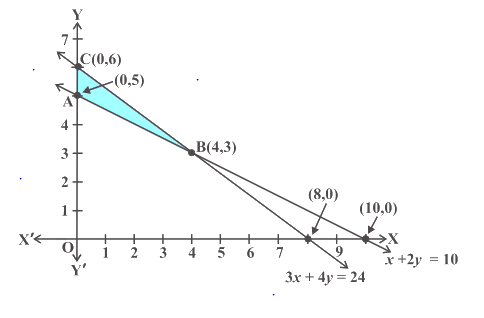Linear Programming For Class 12
Linear programming Class 12 maths concepts help to find the maximization or minimization of the various quantities from a general class of problem. This kind of problem is known as an optimization problem. The linear programming for class 12 concepts includes finding a maximum profit, minimum cost or minimum use of resources, etc. These notes are provided here for the students to help them in the revision process during the exams.
In this article, let us understand the optimization technique for a problem with the help of an example.
Linear Programming Class 12 Concepts
In class 12, linear programming concepts covered are:
- Introduction
- Linear programming problems and mathematical formulation
- A mathematical formulation of the problems
- Graphical method of solving linear programming problems
- Different types of linear programming problems
Different Type of Linear Programming Problems
The various types of problem in linear programming problem included in class 12 concepts. They are:
(i) Manufacturing problem- Here we maximize the profit with the help of minimum utilization of the resource.
(ii) Diet Problem- We determine the number of different nutrients in a diet to minimize the cost of manufacturing.
(iii) Transportation problem- Here we determine the schedule to find the cheapest way of transporting a product at minimum time.
Terms of Linear Programming Problem
There exist specific terms (or terminology) while constructing and solving linear programming problems. Let us define some of the important terms which we shall be using here.
Objective function: A linear function of the form Z = ax + by, where a and b are constant, which has to be minimized or maximized is called a linear objective function.
Consider an example, Z = 175x + 150y.
This is a linear objective function. The variables x and y are called decision variables.
Constraints: The linear inequalities or equations or restrictions on the variables of LPP (linear programming problem) are called constraints. The conditions x ≥ 0, y ≥ 0 are called non-negative restrictions.
For example, 5x + y ≤ 100; x + y ≤ 60 are constraints.
Optimization problem: A problem which seeks to maximize or minimize a linear function (say of two variables x and y) subject to certain constraints as determined by a set of linear inequalities is called an optimization problem. Linear programming problems are special types of optimization problems.
Feasible region: The common region determined by all the given constraints including non-negative constraints (x ≥ 0, y ≥ 0) of a linear programming problem is called the feasible region (or solution region) for the problem. The region other than feasible is called an infeasible region.
Feasible solutions: These are the points within and on the boundary of the feasible region represent feasible solutions of the constraints. Any point outside the feasible region is called an infeasible solution.
Optimal (or feasible) solution: Any point in the feasible region that gives the optimal value (maximum or minimum) of the objective function is called an optimal solution.
Note:
- A corner point of a feasible region is the point of intersection of two boundary lines, which form the region.
- A feasible region of a given system of linear inequalities is said to be bounded if it can be enclosed within a circle. Otherwise, it is unbounded. Unbounded means that the feasible region may extend indefinitely in any direction.
Linear Programming Class 12 Sample Problem
Question: Solve the following linear programming problem graphically:
Minimize Z = 200 x + 500 y
subject to the constraints:
x + 2y ≥ 10
3x + 4y ≤ 24
x ≥ 0, y ≥ 0
Solution:
Given objective function is:
Minimize Z = 200 x + 500 y ….(i)
Constraints are:
x + 2y ≥ 10 ….(ii)
3x + 4y ≤ 24 ….(iii)
x ≥ 0, y ≥ 0 ….(iv)
The graph of these inequalities is:

The shaded region in the figure (above graph) is the feasible region ABC determined by the system of constraints (ii), (iii) and (iv), which is bounded.
The coordinates of corner points of this (feasible or shaded) region say A, B and C are (0, 5), (4, 3) and (0, 6) respectively.
Now, let us evaluate the value of Z = 200x + 500y at these points.
| Corner point | Corresponding value of Z |
| (0, 5) | 200 × 0 + 500 × 5 = 0 + 2500 = 2500 |
| (4, 3) | 200 × 4 + 500 × 3 = 800 + 1500 = 2300 (minimum) |
| (0, 6) | 200 × 0 + 500 × 6 = 0 + 3000 = 3000 |
Hence, the minimum value of Z is 2300 at the point (4, 3).
For more information on class 12 Maths concepts, register with BYJU’S – The Learning App and also explore more Maths-related videos.